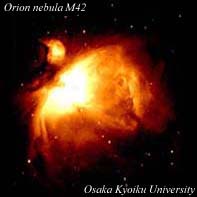 | 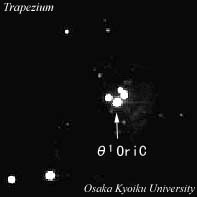 | ||||||||||
|---|---|---|---|---|---|---|---|---|---|---|---|
|
M42 is a diffuse nebula in Orion.
It has spread around the star "Trapezium" of the middle of small three star.
Trapezium consists of four O type stars. Since very high temperature, it is emitting the ultraviolet surrounding space. Surrounding gas ionizes in response to the ultraviolet, and it shines and is visible by emission line of hydrogen etc. The ionization gas of such a young star is called HII region.
M42はオリオン座の小三つ星の真ん中の星(トラペジウム)のまわりに広がる散光星雲です.
トラペジウムの星は生まれたばかりのO型星が4つ集まったもので
(4つまとめてθ1Oriと呼ばれています),
非常に高温なため,周囲の空間に強い紫外線を放出しています.
この4つの星の中でθ1OriCがオリオン大星雲の励起星で,
その紫外線を受けてまわりのガスが電離し,
水素の輝線などで光って見えます. By courtesy of Osaka Kyoiku Univ. | |||||||||||
M42 photoed by the prism
Optical Spectrum of M42
Orion Nebula in Near Infrared
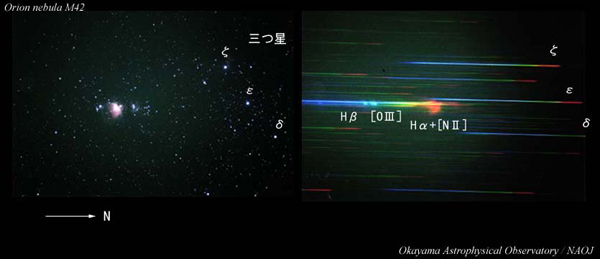
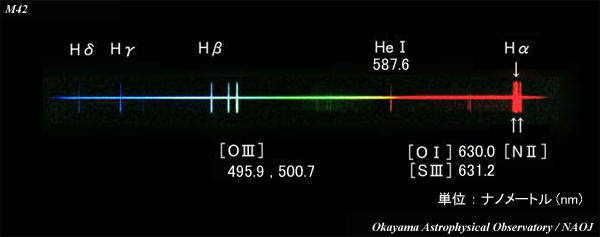
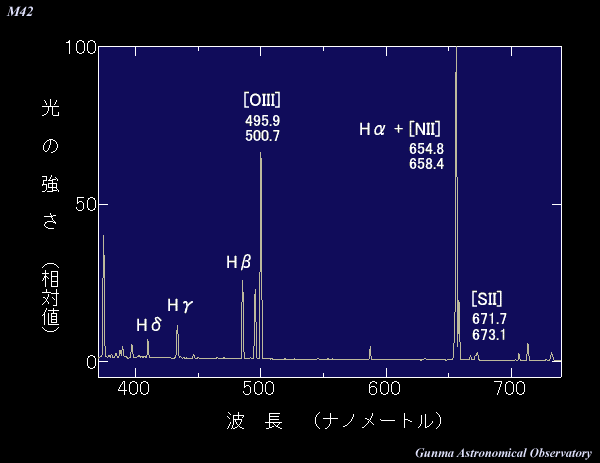
 Forbidden Line and Recombination Line
Forbidden Line and Recombination Line
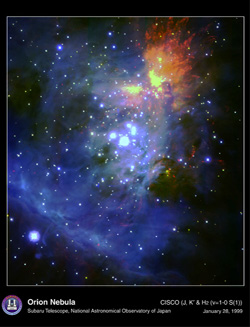
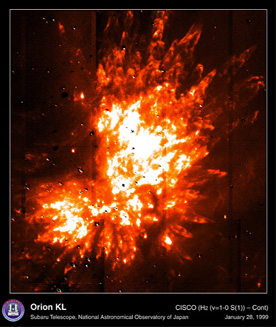
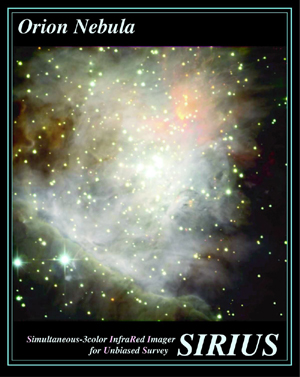
 Go to Nebula
Go to Nebula Go to Submenu
Go to Submenu Go to Menu
Go to Menu